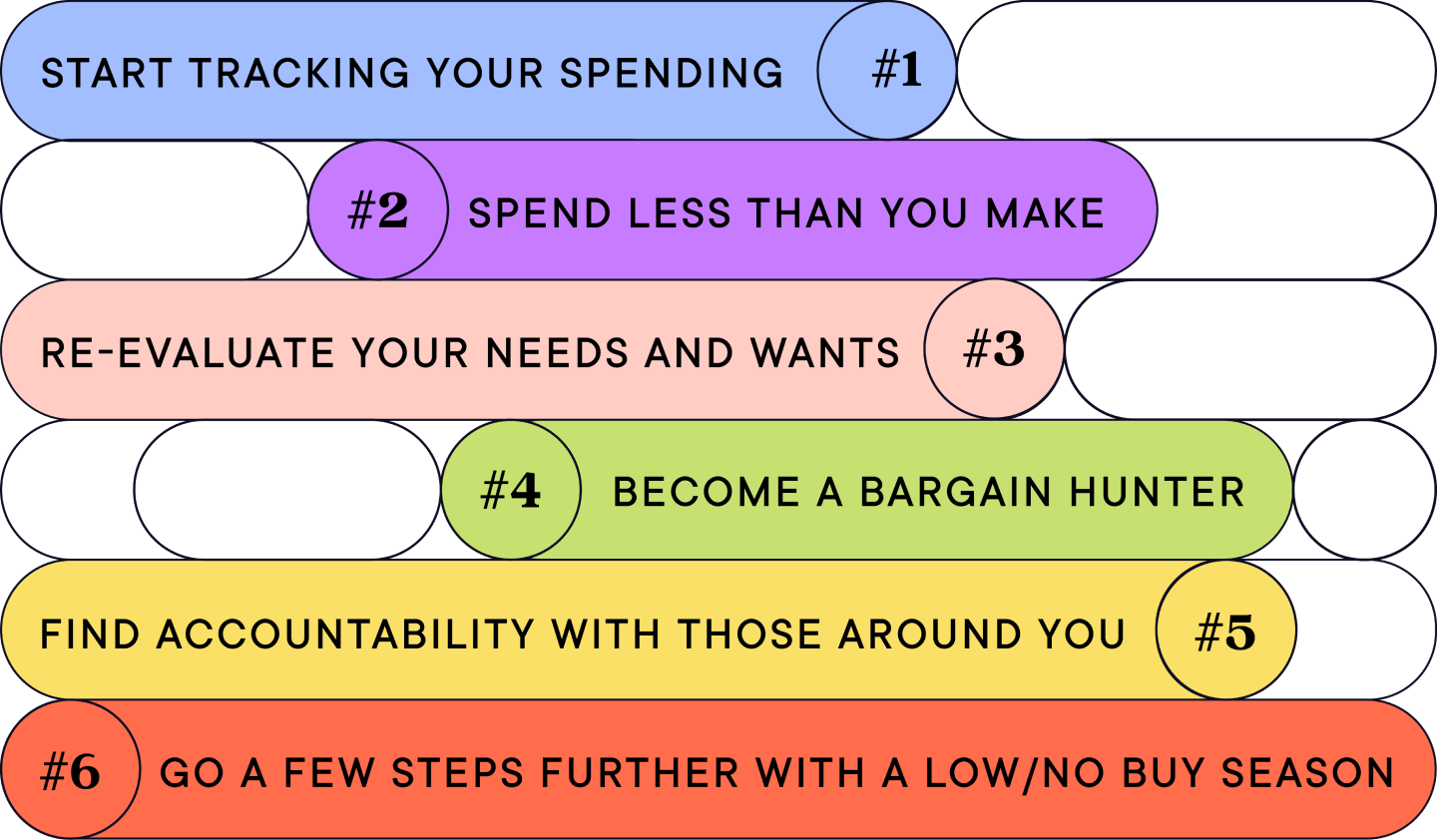Top 6 money savings habits you can start today
Spoiler: you won’t have to give up your morning coffee. Saving money is a common goal, and it’s so much more than just avoiding avocado toast. There’s a multitude of savings tips floating around the internet, and many of them aren’t particularly easy to implement, or they come at the cost of removing things in your life that bring you joy. We have good news though! You don’t have to give up your morning coffee to begin saving money. We’re going to explore six strategies you can start implementing as early as today to change the way you view spending and achieve your savings goals.
1. Start tracking your spending
It's pretty hard to start saving money if you don’t know where your money is going. Whether you have an established budget that you update regularly or find budgeting a painful idea you haven’t wanted to think about, this is going to be one of the best places to start.
If pulling together a budget is a bit intimidating for you, then you should start off with tracking your spending. Outline what kinds of categories you spend money in and tally them up. Do you notice any areas that surprise you? Use this information to set different goals, and commit to spending so much money in a particular category, reducing spend by a percentage, or spending less this month than last month overall or within a category.
When building out a budget, you can make it as simple or complex as you would like—just create something that works for you. You can pull together a beautifully intricate budget, but if it’s so detailed that you don’t want to update it regularly, then it won’t be very helpful for you. So what’s your goal, and how can your budget help you see if you’re making progress toward that goal?
Tracking your spending lets you see what patterns you are establishing with your money, and allows you to make informed decisions. Whether you’re looking to save 5% or 20% of your income, you won’t really know how you are doing without keeping an eye on your spending.
2. Spend less than you make
It feels like common sense, but it’s not always easy (especially if you’re not tracking your spending). Consistency is most important here. You’re probably not going to spend less than you make every single month (think Christmas season, special holidays, etc.). However, whether you make the habit of spending less or more than your income each month will have quite the impact on your finances.
The extent of how much less you want to spend is entirely up to you. We’re not here with banners and pitchforks saying that you need to follow the 50-30-20 budgeting method (because realistically, how many people’s expenses are 50% or less of their income?).
If you struggle with putting money aside that you won’t touch, consider setting up a separate account for your savings (preferably one without fees, like Neo Money™ or HISA). You can also work with your employer to adjust your auto-deposit so that a percentage of your paycheque goes into that account. This helps you put money aside right away without even thinking about it.
Explore Neo Money accounts
3. Re-evaluate your needs and wants
Spending money isn’t inherently bad. It’s still important to spend money on things that bring you joy. Sometimes we need to re-evaluate what we are defining as needs and wants.
Saving your money doesn’t mean that you can’t spend anything beyond essentials. All things in moderation, right? If you’re creating a budget, put money aside for saving, but also for whatever you want. Cutting yourself off entirely creates a state of psychological reactance (the more you restrict yourself, the more you want it) and makes it harder to reach your goals.
Practicing mindfulness with your spending can be an effective way to start saving more. That isn’t to say you should stop ordering take out, but maybe applying a Marie Kondo method (does it spark joy?) to your spending will help you prioritize spending on things you truly want or need.
4. Become a bargain hunter
There’s a special kind of buzz you get when you buy something (regardless if it’s a want or need) for significantly less than the original price. Searching for these deals, or timing your purchases strategically is a great way to start saving more money.
Hunting for deals online, shopping second-hand options, finding cashback incentivized offers, buying essentials in bulk, or shopping for things during the off season are all ways to hone your bargain hunting skills. When you prioritize getting a good deal over convenience, you can also reduce impulse purchases. You might surprise yourself with how many needs will turn into wants as you start investing your time into finding the best deal.
If impulse buying is a struggle for you, try instilling a 24-hour rule. Walk away (or close the tab) and come back to it a day later and see if it’s something you’re still wanting.
5. Find accountability with those around you
They say that you become like the people that you spend the most time with, so are those around you aspiring for the same financial goals you are? If you’re trying to reduce spending on partying, shopping, or eating out, then you might need to re-evaluate and prioritize situations where you’re willing to spend the money in those categories.
Keep in mind, nothing we are expressing is with an all-or-nothing mindset. Progress is progress and as we expressed earlier, consistency is key. So if you want to go out for a great dinner for your birthday you absolutely can make that choice.
As you start to establish new financial goals and priorities, communicate those with your friends and family. Let them know how you are wanting to approach these goals, like cooking at home, changing your coffee routine, or exploring different thrift stores. Then explain how they can help support you by sharing their favourite recipes, coffee hacks, and visiting their favourite thrift stores with you.
There are tons of communities online as well that you can start to explore. Find people with similar goals in mind and you can help one another stay accountable.
6. Go a few steps further with a low/no buy season
Feeling committed to saving as much as possible during the shortest period of time? Try doing a low, or no-buy season. This is where you outline rules for yourself when it comes to spending.
In a no-buy season, people will go as far as not allowing any non-essential spending for a month, a quarter, or even a whole year. A low-buy season gives you a bit more flexibility (and therefore can be a bit easier to stick to). When people implement a low-buy season, they’ll reduce non-essential spending but will allow specific exceptions. Instead of completely ceasing to eat out or get coffee, they only participate under certain circumstances.
Conclusion
Saving money has very little to do with whether or not you get that avocado toast. It’s a series of decisions and patterns. It’s also not about saying no to everything—you should be enjoying the things and opportunities money can provide. Know where your priorities are with your spending and commit to them. Even if you look at implementing only one of the six strategies discussed above, you’ll start making progress towards your savings goals.



